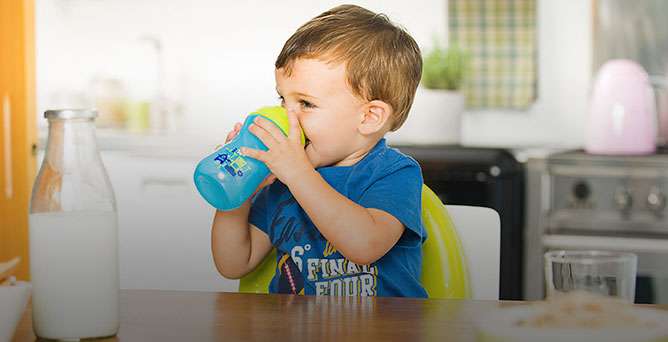
As the child grows, he enhances his nutrition-related skills by passing, through a gradual process, from the typical suckling of the breastfeeding to the ability to drink and swallow. We propose some advice to guide the child towards the use of the evolutionary glass, making him acquire, after sipping, a new important autonomy.
When to start drinking from the glass
The universal rule applies to the change from bottle to glass: every child has his time! Absolutely to avoid constraints, impositions or comparisons, it will be the child to make you understand when he is ready to abandon the bottle and start drinking like adults. In general, the first changes occur around 6 months as a consequence of some anatomical changes, such as the laryngeal descent and the appearance of the first teeth, and neurological changes related to the movements of the head, jaw, lips and tongue.
The right movements to drink from the glass
To learn how to drink from the glass the child must acquire new movements. For the first attempts it is important to start with small amounts of liquid, to gradually increase. To understand if the child has learned to properly use the glass, you can watch him drinking while paying attention to these movements:
- its lower lip rises and moves outwards, resting on the cup or on the glass so as to stabilize the contact;
- his tongue remains in the oral cavity, does not come out as for sucking;
- the glass is reclined and the head protrudes, without hyperextension of the head to prevent water from ending up in the airways;
- the liquid is sorbed and swallowed.
If the child does, of course, these movements you can be sure that he has conquered another small great goal towards autonomy.
At every age his cup
It is important to choose evolutionary cups specially designed to guide the child in a simple and natural way in every phase of its development, encouraging it, sip after sip, to learn to drink from the glass in an autonomous way. It is important to choose glasses characterized by interchangeable spouts and removable anti-drip valves so as to adapt to each stage of growth, without making the beloved baby bottleregret. The different interchangeable spouts, in fact, are designed to help the child to correctly position the lips and to adapt to each phase of growth. The removable valve allows you to customize the cup according to the capacity acquired by the child: in fact, it allows you to avoid unwanted water leaks but also, if removed, to experience a free but reduced flow of liquid. In addition, the shape of the ergonomic handles, the weight of the glass and the materials used must be balanced with the child's motor skills at every age of development. This will help the child to pass, with serenity and enthusiasm, from bottle to glass acquiring a new independence.
